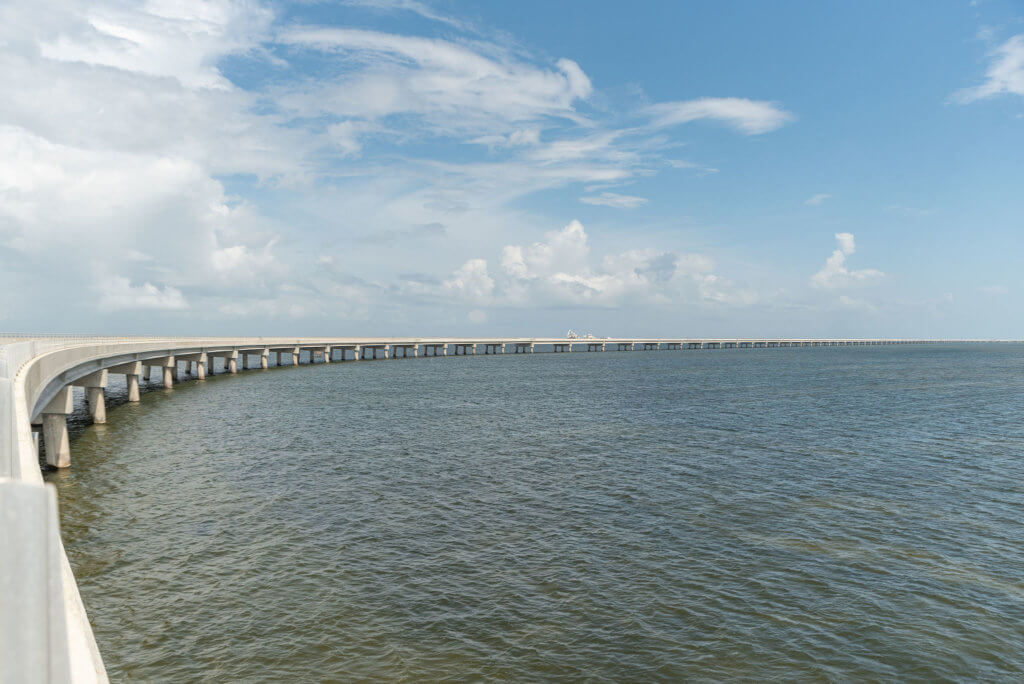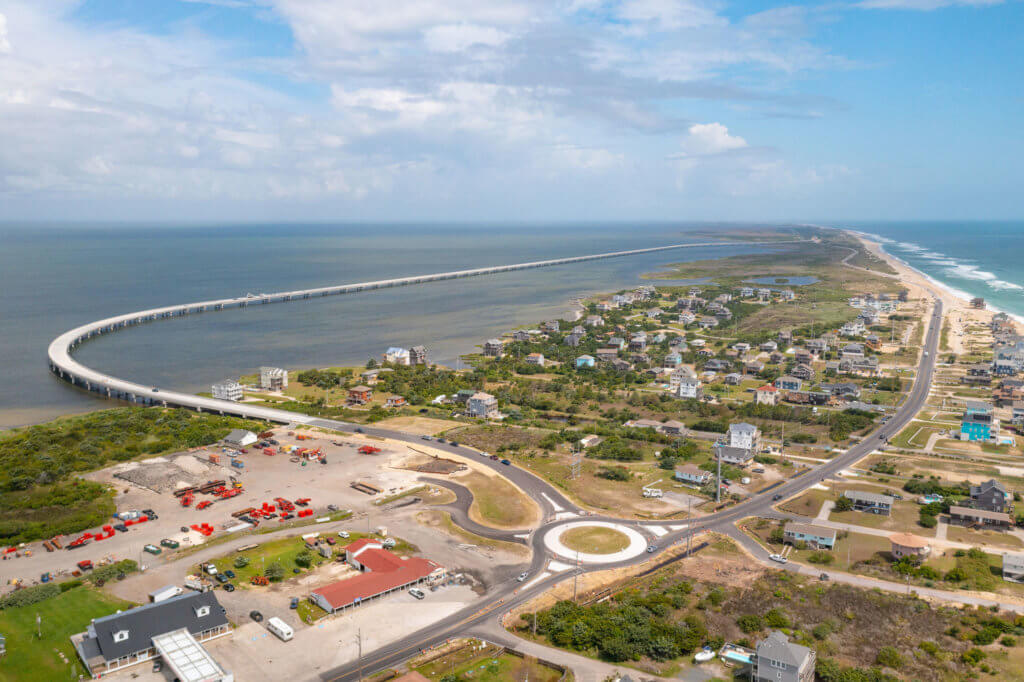Project News
Rodanthe Bridge Opens to Traffic
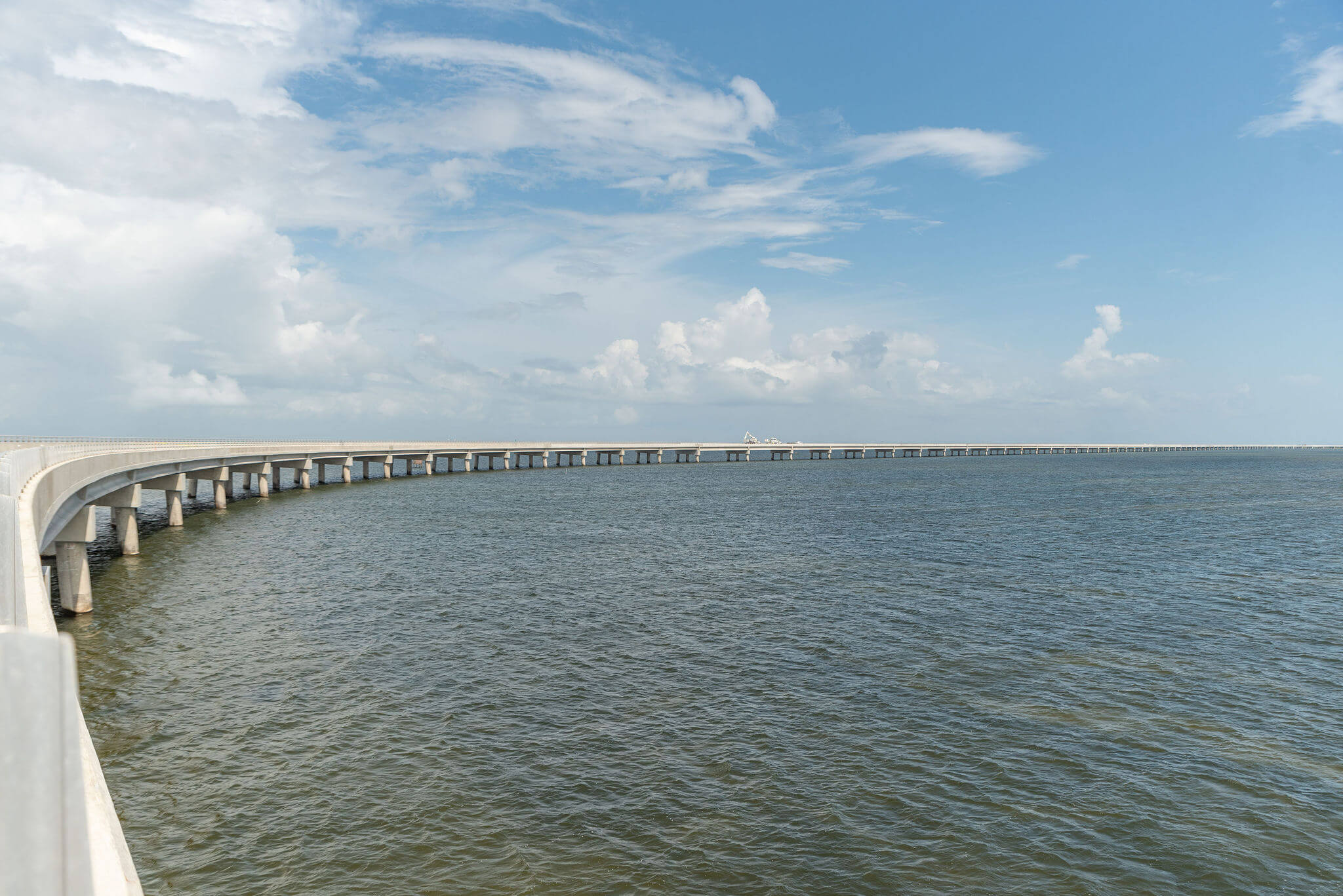
Celebration is in order in the tight-knit community of Rodanthe, on the Outer Banks of North Carolina as the N.C. 12 Rodanthe Bridge officially opened to traffic.
With construction beginning in 2018, this 2.4-mile dynamic bridge extends into the Pamlico Sound of the Outer Banks, bypassing a flood-prone section of N.C. 12 known locally as the “S-curves.” Alleviating travel impacts caused by washouts, the Rodanthe Bridge provides a reliable thruway for travelers in this tourism-heavy community of barrier islands.
Dedicated Flatiron employees worked with the North Carolina Department of Transportation and lead design firm, RK&K to overcome unique environmental challenges and deliver a functional and beautiful bridge – all while demonstrating commitments to safety and sustainability.
During peak construction, the project had more than 130 laborers, carpenters, pile drivers, crane operators and supervising staff working to build the 12,987-foot long bridge. Throughout the duration of the project, more than 700,000 worker hours were exerted to complete the project.
Industry-Leading Innovation: The Advancing Rail System
Due to shallow water depths – less than four-feet at the location of the bridge – the use of industry-standard methods of construction, such as barges, was not possible.
To meet this challenge, the project team developed the Advancing Rail System. This system was favored over a standard work-trestle approach due to its ability to ‘leap frog’ temporary work sections of the bridge – a capability that allowed easier movement of the 54-inch (diameter), 158-foot (length) concrete piles that support the bridge.
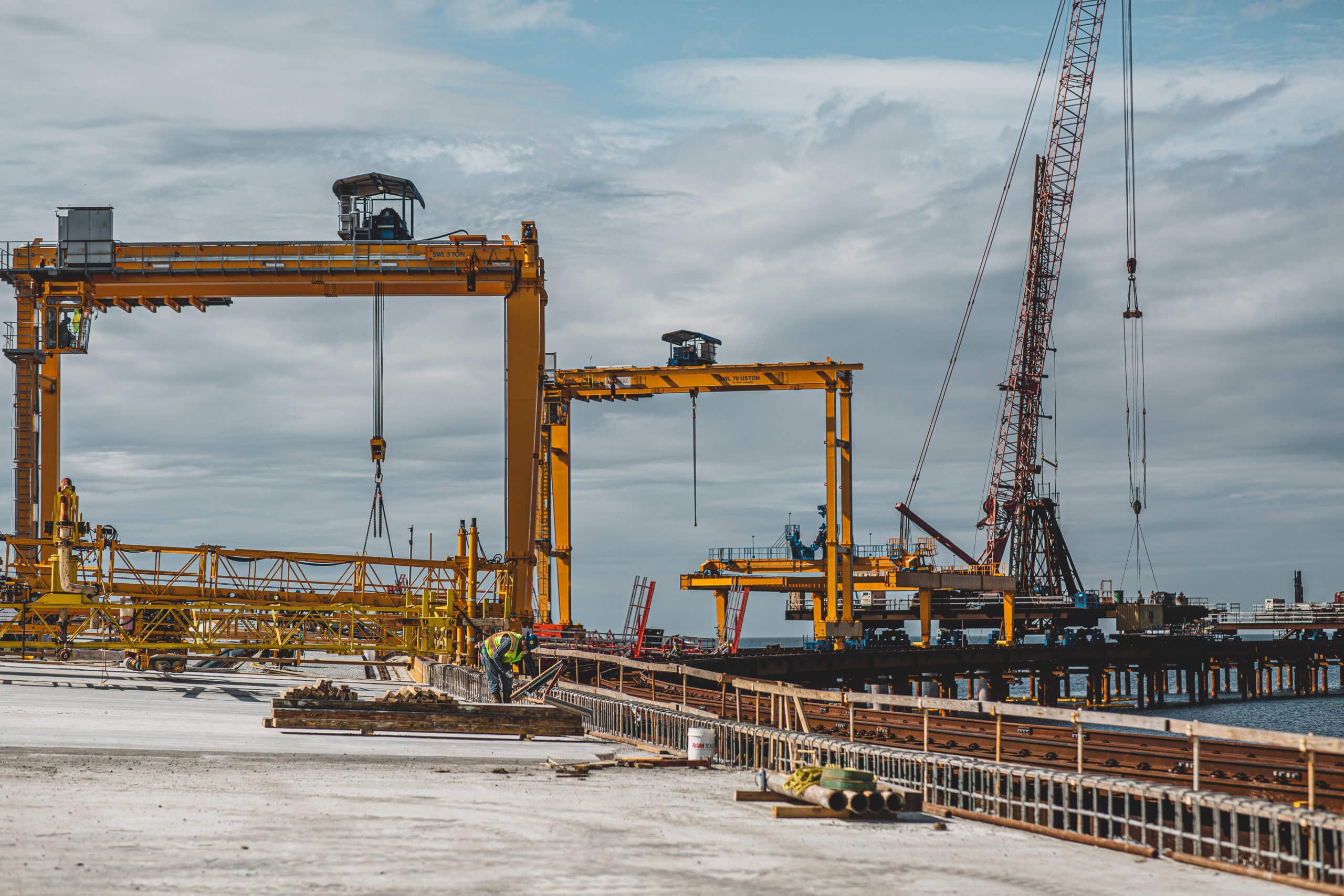
“The rail system basically served as an assembly line that supported all construction of the permanent bridge structure,” said Sean O’Neal, who worked as a Project Engineer on the Rodanthe Bridge. “Since conventional barge–mounted cranes and trestles were not feasible, this important innovation was key to ensuring construction ran smoothly and safely.”
The entire rail system contained more than 18 million pounds of steel, and the equipment used to construct the system was imported from Italy, Vietnam and Albania.
Throughout the duration of the project, crews utilized this key innovation to effectively place a total of 294 concrete cylinder piles.
In addition to increased efficacy, the Advancing Rail System also helped the team significantly reduce environmental disruption to the surrounding areas.
Design and Construction
The Rodanthe Bridge has many unique characteristics from the iconic “jug-handle” design, to the advanced construction methods that helped bring it to life.
Throughout construction, teams worked from both the North Heading and the South Heading until the two headings finally merged in September, 2021, creating the signature “jug-handle” design.
The expertise provided by Flatiron’s Construction Engineering Group played a key role in the success of the project. Having designed the pile driving template, the pile inserts for cap framework support and the auger access platform, the Construction Engineering Group helped drive success by giving the crews a seamless outlet for transporting and placing materials amid the various environmental and logistical constraints.
The entire rail system contained more than 18 million pounds of steel, and the equipment used to construct the system was imported from Italy, Vietnam and Albania.
Throughout the duration of the project, crews utilized this key innovation to effectively place a total of 294 concrete cylinder piles.
In addition to increased efficacy, the Advancing Rail System also helped the team significantly reduce environmental disruption to the surrounding areas.
“The steel pile inserts were designed to temporarily support the pier cap framework during installation. The pile inserts supported the formwork which allowed project personnel access to work areas,” said Scott Tudor, Mid-Atlantic Construction Engineering Manager. “Once the formwork was in place and secured, the pile inserts were removed and re-used, helping minimize material use.”
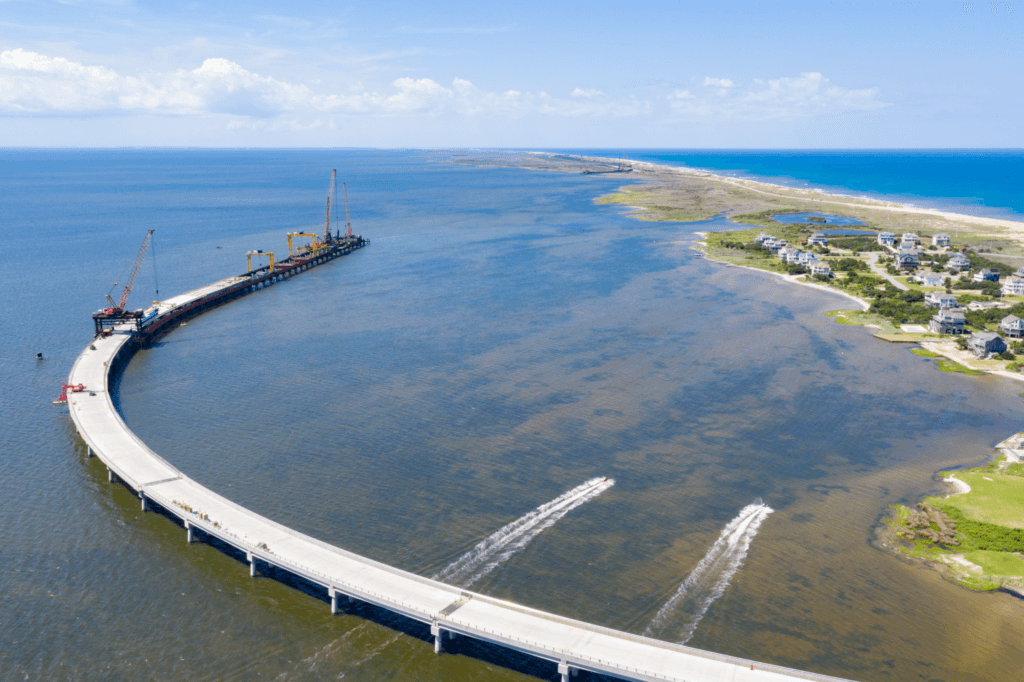
In total, the bridge contains nearly 90 97-foot long 45-inch Florida I-Beams, 300 137-foot 72-inch Florida I-Beams and 30,000 cubic yards of concrete.
While the bridge sits in less than four feet of water, it was designed for 52 feet of scour. This thoughtful design allows leeway in the instance that the sand around the piles was to erode.
Commitment to Sustainability
The unique environmental habitat surrounding the bridge is composed of submerged aquatic vegetation, a type of rooted aquatic plant that grows entirely under water. Protecting this vegetation and its habitat posed a unique challenge that the project team was able to overcome through careful planning, teamwork and collaboration with professional environmental agencies.
Originally, the team was permitted to disturb up to 10 acres of the area that the submerged aquatic vegetation occupied. In the end, the team only disturbed one acre out of the allotted 10, reducing the impact by 90 percent.
“From the start, our entire team worked very closely with numerous environmental agencies to ensure environmental commitments were upheld throughout the life of the project,” said Matthew Cook, RK&K Water Resources Manager. “We are very proud that we were able to drastically minimize the impact. Through careful planning and strategic relocation of some of the submerged aquatic vegetation, we were able to leave this area just as beautiful as it was when we found it.”
“This commitment to sustainability is a prime example of Flatiron’s efforts dedicated to reducing environmental impacts within our field of work,” said Shaun Flater, Director of Environmental for Flatiron.
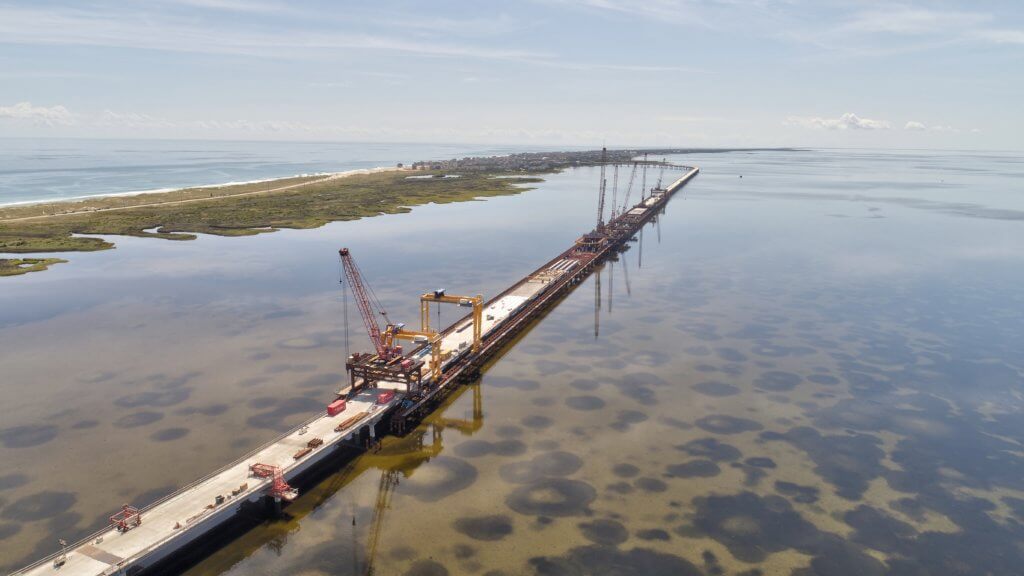
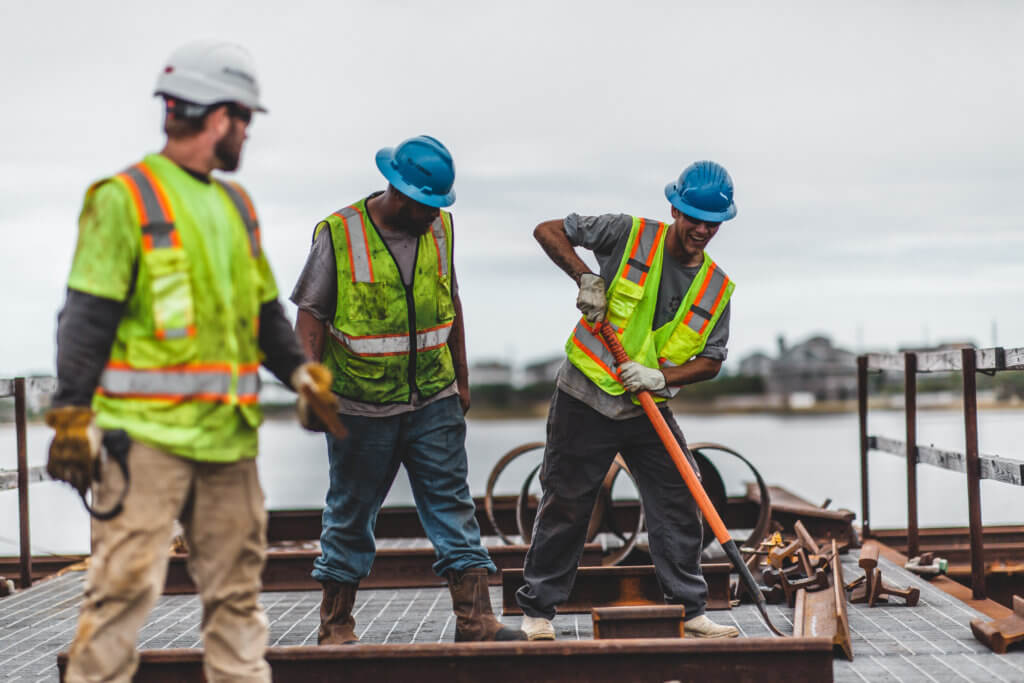
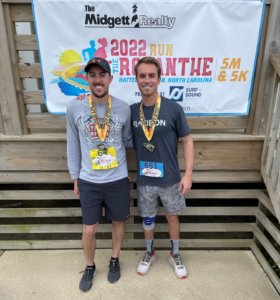
Enhancing the Lives of the Outer Banks Community
As this $145 million design-build project prepared to open to traffic, the response from locals was outstanding.
In April 2022, local community organizations sponsored a “Community Day” that included the “Run the Rodanthe” race. Proceeds from the race benefitted the Rodanthe-Waves-Salvo Civic Association.
Flatiron Engineers Ryan Daudelin and Sean O’ Neal had the opportunity to participate, running across the bridge they helped build!
Flatiron is proud to have been a part of this amazing project and thrilled to see the bridge enhance the community in such a profound way.
For more information on the Rodanthe Bridge, please visit https://www.flatironcorp.com/project/n-c-12-rodanthe-bridge/.
